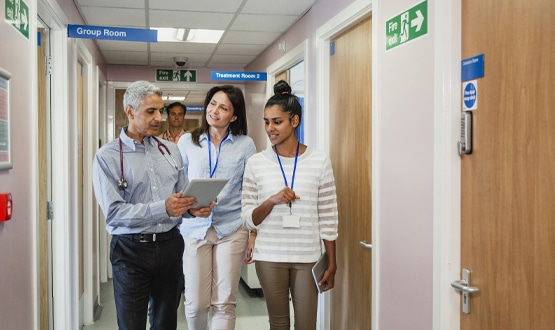Infrastructure gap between NHS trusts growing
- 22 April 2008
 |
The gap between the best and the worst NHS trusts on the effectiveness of their IT infrastructure and operations is growing, with the poorest performers failing to keep up with best practice.
Mark Ferrar, Connecting for Health’s director of infrastructure, said at Healthcare Computing 2008 in Harrogate today that while some NHS organisations were investing in modern IT infrastructure, comparable to the benchmark being set in other sectors, others are failing to invest and lagging behind.
“The gap between the best and the worst is widening. The best are getting better and those not as mature are staying still.”
Ferrar said the maturity of infrastructure and associated IT operations, varied widely. “It’s good in some areas and bad in others.”
The CfH infrastructure director said that of the estimated £2.2bn – £2.3bn annual IT spend within the NHS, some 70% was accounted for by infrastructure. “That’s £1.54 spent annually on infrastructure and operations.”
Ferrar said this was not always being translated into giving staff modern PCs and tools to do their jobs, “One unnamed trust IT manager proudly told me he was getting 11 years out of assets. I felt sorry for his end users.”
He said one of the basic steps trusts need to take is to far better understand how many PCs and software licenses they had. He said that too few even have a complete spreadsheet of such assets, “we generally don’t know what software we have,” said Ferrar.
Similarly, he said there was a more sophisticated view of the total cost of ownership (TCO) of assets, so that trusts could get the best value, rather than lowest cost, and plan for redundancy from the outset. “We don’t know what the total cost of ownership is across the NHS despite being the 800lb gorilla in IT purchasing.”
He said that proper asset management was vital to understanding TCO and enabling the NHS to negotiate the best enterprise licensing deals with key vendors. “I don’t want to have to sit down with Microsoft and say I don’t know how many PCs the NHS has or how many copies of Microsoft Office. So this translates into real money.”
He added that on hardware and PCs the NHS also needed to ensure it got the right deal in what was a fiercely competitive market, and should be better using its purchasing power. “There’s lots of crocodiles in this market and they will bite your hand off, and have been biting our hand off.”
To help NHS organisations plan and improve their infrastructure development CfH has developed the NHS Infrastructure Maturity Model (NIMM), a five-tier model that trusts can benchmark their performance against and prioritise future investments. NIMM draws on best practice research from Gartner, Microsoft and others.
Most NHS organisations currently fall between the first two levels, lagging several years behind the sophistication achieved by other industries where infrastructure has been better integrated and able to support business change and innovation.
Ferrar explained that the aim of the model, each element of which is supported by templates and tools, including self-assessments, is to enable organisations “to play leapfrog up through this process. He said that CfH estimates it will typically take each organisation two to three years to advance fully through each of the five levels.
One important part of the model is a TCO prototype that is now being piloted by Lincolnshire PCT, South Devon Health Informatics Service and Sussex Health Informatics Service.




